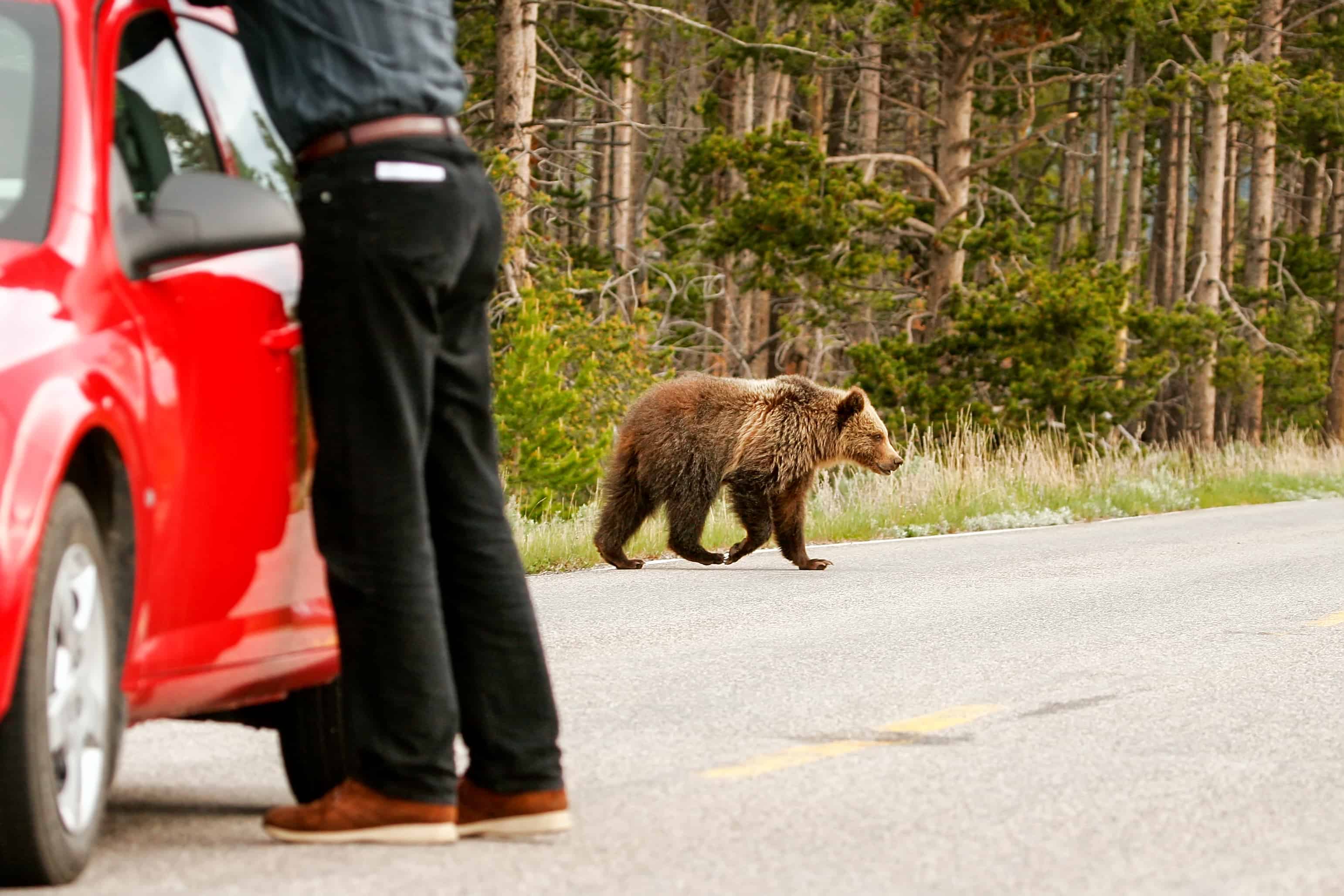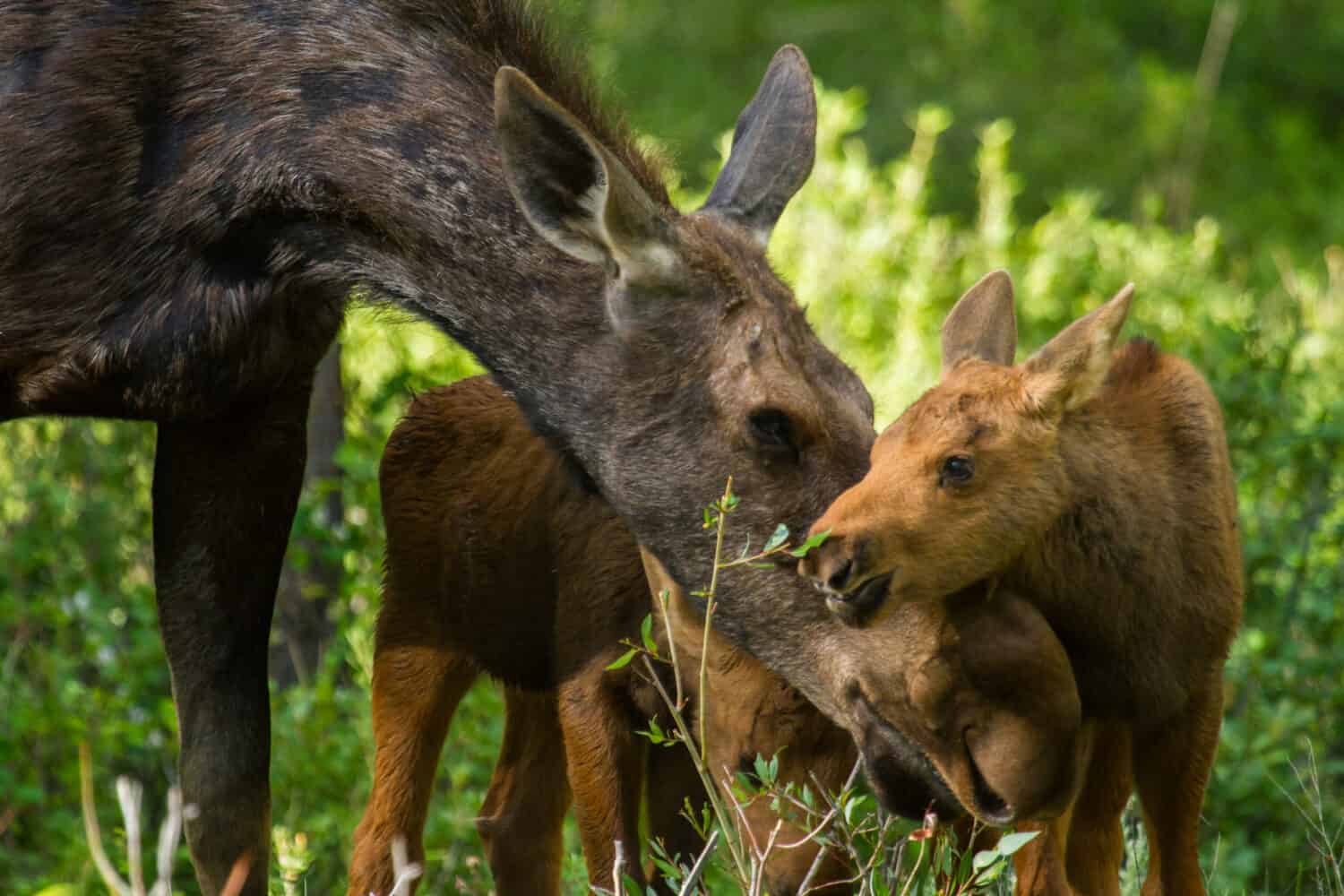Continue reading for our analysis...

A frolic in the woods for this moose quickly turned into a fight for its life. Watch the video below that shows a merciless brown bear hunting down an unsuspecting moose calf!
The video is taken from the inside of a car driving on an open forested road. It begins by showing a grizzly clinging onto a moose calf. Upon seeing the car, the bear becomes slightly spooked and runs away, dropping the calf onto the road.
The video continues, showing separate clips of the bear coming back and latching on to the moose, only to drop it a few moments later. To the average viewer, it seems as though the grizzly is almost toying with the moose. Don’t be fooled though; this bear is on the hunt.
After a few repeated chases, the video ends by showing the moose and the bear running off into the nearby forest, likely to continue their deadly chase.
When is Moose Mating Season?

Most moose tend to breed in the Fall and give birth in the early Summer. This creates a regular hunting schedule for all types of predators.
©Green Mountain Exposure/Shutterstock.com
Seeing a moose can be a rare event for most people. Likewise, seeing a baby moose can be even rarer to see. Due to this, most people wonder when moose tend to have babies, such as the one shown in the video above.
Moose tend to begin breeding in the early fall months. Typically, this lies between late September and early October. Breeding in this time window is optimal for them, as it is when they often have the most stored resources to last the winter.
Most moose tend to give birth in the early summer months. Generally, that falls somewhere between late May and early June is the sweet spot for moose calves to be born. Due to this, the moose calf shown in the video was likely born just a few months before the recording date.
How Large Do Moose Get?

A male bull moose weighs about 1,400 lbs!
©Tom Tietz/Shutterstock.com
Typically, male bull moose average about six feet tall standing at the shoulder and can weigh up to about 1,400 pounds! While females are generally smaller, they are still a massive deer species.
Furthermore, an Alaskan moose that weighed a whopping 1,808 pounds holds the world record for the largest moose ever. It was hunted in the area of Yukon in September of 1897 and stood at a towering 7.6 feet at the shoulder.
Is it Normal Behavior for Brown Bears to Eat Moose?

A typical brown bear eats a range of plants, such as berries, bulbs, roots, and even some broad leaves.
©Perpis/Shutterstock.com
Another interesting component that lies within this story is the diet of brown bears. Contrary to what you might have guessed based on the video, brown bears are actually omnivores. Furthermore, the majority of their diet consists of plant material!
For instance, a typical brown bear eats a range of plants, such as berries, bulbs, roots, and even some broad leaves.
As for meat, brown bears tend to be somewhat selective with their food. Generally, they will stick to hunting small animals such as squirrels, rabbits, marmots, deer, and more. They will also hunt baby animals such as the moose calf.
Hunting small animals can be beneficial to bears, as it increases the chances of them having successful catches. Some brown bears that live in coastal areas have also been known to eat fish and clams near bodies of water.
Interestingly, some sources also note that brown bears will eat larger prey if it is already injured or dead. Similar to the idea of hunting small prey, this behavior ensures that they will have an easy kill. In fact, big prey can be a valuable thing for bears, and can sometimes even start full-blown brawls!
Thank you for reading! Have some feedback for us? Contact the AZ Animals editorial team.







